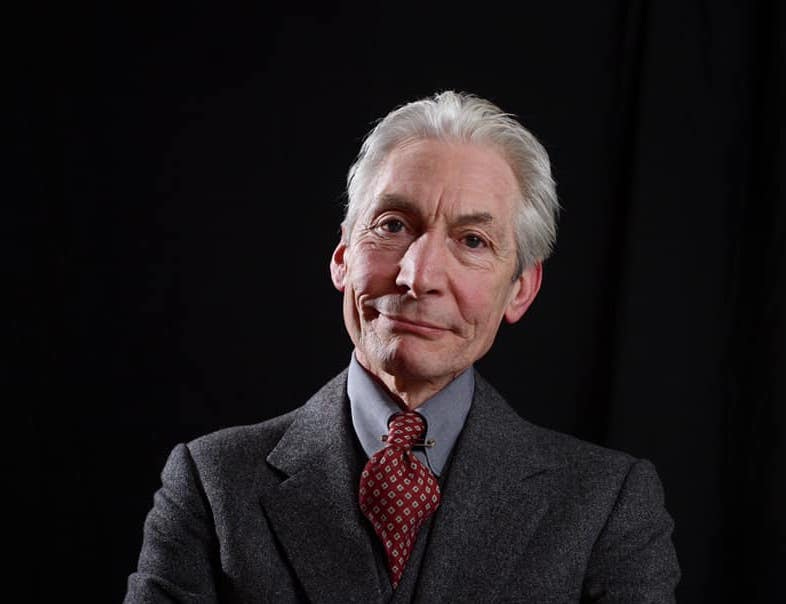It was Tuesday evening, 24 August 2021. I had just turned on a TV news program when the image of Charlie Watts appeared on the screen. The instant I saw it, I shouted the F-word. Loudly. I didn’t have to wait for the news anchor to tell me what I already knew. There could only be one reason they were showing the image of that sweet, modest, non-controversial man. Charlie had died.
Of the many tributes that followed, Joan Jett said it best: “Charlie Watts was the most elegant and dignified drummer in rock and roll. He played exactly what was needed - no more - no less. He is one of a kind.”
2024 marks my 60th year as a Rolling Stones fan. That, you might assume, explains the title, “Aging with the Stones.” Mick and Keith turned 80 last year. I’ll turn 80 (hopefully) in 18 months. By aging, I am not referring to the accumulation of calendar years. If that were the case, I would have titled the piece, “Getting Old with the Stones.” There’s a difference between aging and getting old which I’ll get to shortly. First, I’ll wrap up my thoughts about the greatest rock-and-roll band in the world.
If you had asked me who my favorite Rolling Stone was for the first ten years, I would have answered, Mick Jagger. In the 70s, 80s, and 90s, it would doubtless be Keef—the seemingly immortal Keith Richards.
There are numerous reasons Charlie became my favorite Stone, most of which have to do with the fact that he was the antithesis of the stereotypical rock star. He preferred jazz to rock, didn’t hang out with celebrities, was not attracted to gorgeous models, lived out in the country raising horses, and was loyal to Shirley, his wife of nearly 60 years. In other words, the things that matter to me now were deemed irrelevant when I was young.
The Stones are still important to me because they exemplify the difference between aging and getting old. In his book, Ageless Soul: The Lifelong Journey Toward Meaning and Joy, Thomas Moore writes: “To age well you have to be profoundly old and profoundly young…Stay in touch with your soul’s youthfulness, and you won’t feel the full burden of aging.” That certainly applies to the Stones—whose upcoming tour is sponsored by AARP
In a Night Thoughts piece a while back I wrote about an experience that happened some years ago when Marissa and I were visiting my former stepdaughter Cindy in St. Louis:
“One night we were drinking wine with Cindy and her husband Ryan when I recalled some incident or other that occurred when I was Cindy’s stepdad. I said, ‘Hey, Cindy! Do you remember the time back when we were growing up that…’ I stopped talking, astounded by the words I had just uttered.”
Why wouldn’t I be astounded? I was 37 and she was 13 when I came into Cindy’s life. I had served two tours of duty as a combat Marine before she was born. I received my master’s degree in philosophy the same month she turned six. In the Night Thoughts piece, I claimed that my utterance came straight from an unconscious awareness that we were growing up together. Thomas Moore substantiates this point of view, writing, “Those who can say yes to life and engage the world grow up at every step from youth to old age…You may think you’re too old to grow up, but there is no time limit on aging.”
While I agree with Moore that there is no time limit on aging, the part about saying yes to life did not apply to me when I married Cindy’s mom. In that conversation in St. Louis, it would have been more accurate to say, “Hey Cindy! Remember that time back when you were growing up and I was struggling to stay alive…”
“As we look over our history,” writes Moore, “we will likely see special turning points or problems that helped us grow up.” Life with Cindy, her mom, and her brother was a special turning point for me. The marriage didn’t survive, but that relationship kept me alive. In Moore’s words, the river of my life was frozen. “Often,” he writes, “this cold, frozen portion is so potent that it holds back the whole of life.” In my case, it was on the verge of ending it entirely. One day, a Vietnam veteran buddy of mine said to me, “Those guys on the Wall (the Vietnam Veterans Memorial)? They’re the lucky ones.” Without hesitation, I replied, “You got that right!”
That divorce was the turning point. I would either discover a way to say yes to life or end it all. I found a way to the former in three steps: reaching out to Simon Gregory, my company commander during my first Vietnam tour of duty, and other fellow Marines; writing about our mutual experience in Vietnam; and returning to Vietnam.
Parts one and two of “Returning to Vietnam” were about my journey in 1994. You will receive part three in the next week. It’s about the Vietnam trip seven of us made in 2019, the subject of “A Vietnam Peace Story,” a documentary by Andy Cline. Andy is putting the final touches on a 21-minute film in which he and I discuss that journey and its healing effect on my friends. I think you’ll enjoy it.
In the meantime, check out the Rolling Stones’ tribute to Charlie Watts.





What a great tribute to the Stones and to aging. As some of us know, as did Moore, "there is no time limit on aging.” Thank you, Gary.